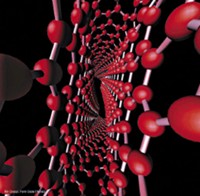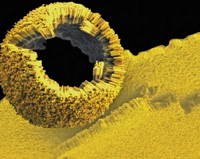Advertisement
Grab your lab coat. Let's get started
Welcome!
Welcome!
Create an account below to get 6 C&EN articles per month, receive newsletters and more - all free.
It seems this is your first time logging in online. Please enter the following information to continue.
As an ACS member you automatically get access to this site. All we need is few more details to create your reading experience.
Not you? Sign in with a different account.
Not you? Sign in with a different account.
ERROR 1
ERROR 1
ERROR 2
ERROR 2
ERROR 2
ERROR 2
ERROR 2
Password and Confirm password must match.
If you have an ACS member number, please enter it here so we can link this account to your membership. (optional)
ERROR 2
ACS values your privacy. By submitting your information, you are gaining access to C&EN and subscribing to our weekly newsletter. We use the information you provide to make your reading experience better, and we will never sell your data to third party members.
Policy
Setting Priorities For Nanotech
The state of environmental, health, and safety research of engineered nanoparticles gets a critical exam
by Susan R. Morrissey
October 15, 2007
| A version of this story appeared in
Volume 85, Issue 42

WITH MORE nanotechnology-containing products hitting the market, the need for research on the environmental, health, and safety (EHS) impacts of these engineered nanomaterials is vital. And while more federal dollars are going into such research, experts agree that the lack of a common list of priorities is hampering assessments on the risk of this technology to the public and the environment.
Now, both government and nongovernmental organizations (NGOs) are taking on this challenge by identifying nanotech EHS research priorities and developing strategies to get answers about relative risks and benefits of various nanotechnologies. But time is of the essence, and as the federal government plods toward a strategic plan, several NGOs have already released or are about to release strategic plans of their own, leaving some observers to question just how useful the federal strategy will end up being.
Heading the federal government's efforts to develop an EHS strategic research plan is the National Nanotechnology Initiative's (NNI) Nanotechnology Environmental & Health Implications (NEHI) working group. This group is made up of representatives from the more than 20 federal agencies that are a part of NNI.
"The movement toward developing a strategy for addressing EHS research needs related to engineered nanoscale materials has been under way for a number of years," says E. Clayton Teague, director of the National Nanotechnology Coordination Office, which supports interagency activities under NNI. Teague notes that once the NEHI working group was set in motion, "it became clear that one of the really solid outputs from this effort would be to proceed along a fairly methodical path to developing a strategy that had several ends," namely coordinating federal efforts and leveraging industrial and international efforts related to EHS research.
The NEHI working group took its first step toward developing a research strategy last fall when it released a preliminary list of 75 research priorities across five broad categories (C&EN, Oct. 9, 2006, page 30), among them risk management methods and nanomaterials and the environment. The group subsequently pared down the list to a set of five priorities for each broad category and then published these 25 priorities in August as an interim document for public comment.
"By and large, the comments have been constructive, and they will be carefully considered by the NEHI working group as it prepares its strategy," Teague says.
To date, 11 comments on the research priorities have been submitted. While acknowledging the amount of work that has gone into generating the priority list, many respondents also express concern over the pace of the working group's efforts, as well as what they view as an insufficient level of detail in descriptions of the priorities.
"The current priority-setting process is tediously slow and, at present, incomplete," comments William P. Gulledge, manager of the Nanotechnology Panel of the American Chemistry Council. "Specific projects need to be identified with annual funding requirements and realistic deliverables," he continues, adding that "at the present rate of action by the NEHI working group, others will be establishing a coherent research strategy for implementation by the various federal agencies without the involvement or perspective of all NEHI members."
These problems, Teague says, come in part from the need of the NEHI working group to coordinate with so many federal agencies, which takes time. "We appreciate the desire expressed by some that the research strategy should have been developed yesterday, but the coordination among 13 research agencies and eight regulatory agencies is not something that can be accomplished quickly," he explains.

OTHER COMMENTS, including a letter from the NanoBusiness Alliance, a collection of primarily small entrepreneurial start-ups, express concern about the level of detail contained in the interim document. The document "still has a significant way to go before becoming an actionable strategic EHS research plan. The level of detail of the research priorities lacks specificity to be useful in identifying milestones or findings that are expected to significantly reduce the uncertainty surrounding nanomaterial risks and benefits," the letter from NanoBusiness states.
The Project on Emerging Nanotechnologies at the Woodrow Wilson International Center for Scholars noted a more fundamental problem in its comments on the NEHI report. "The prioritization document lacks the coherence and big picture view needed to allow the government to strategically address the challenges being faced," writes David Rejeski, director of the Project on Emerging Nanotechnologies.
Comments by the project's chief science adviser, Andrew D. Maynard, strengthen that point by asking if the working group is "mistaking methodology for strategy." In his written comment, Maynard states, "While the current document focuses on prioritization, it appears to do so without a clear understanding of context: what the overarching issues are, what is needed to address them, when results are needed, and how the work will get done."
Expanding on this point, Maynard tells C&EN that it seems like the government was committed to a bureaucratic process that may appear good on paper, but in the end provides no guarantee that it will lead to an effective research strategy. He also questions how effective a strategy proposed by the NEHI working group can be because the group has no oversight authority.
"I'm really convinced that one of the things that is lacking in this effort is somebody within the government with a vision for what needs to be done, the time to actually develop that vision, and the authority to implement it across multiple agencies," Maynard says. "Until you have someone in that position, you're not going to see any movement."
Teague notes that as the working group continues to review the submitted comments, it is taking the next step in developing a strategy: using data gathered by the Office of Management & Budget (OMB) from the federal agencies involved in the NEHI working group on the full research portfolio of EHS work they supported in 2006. This effort has identified hundreds of research projects that contained at least some element of EHS work, Teague says.
THE WORKING GROUP is now sifting through the OMB data set and classifying each project under one of the five broad research categories identified in the interim document. Once completed, the working group will do a gap analysis and develop a strategy for assessing which areas of research should continue to be a focus and what new areas need to be added. The group expects to release this strategy later this year or early next year, according to Teague.
Although the strategy is intended to guide the agencies as they manage and coordinate nanotech-related EHS research, Teague says it also has another goal. The final strategy document is expected to influence and inform Congress, the executive office, and the agencies when they set the budget for this research in their annual budgeting exercises, he says, adding that there is still time for this strategy to affect the fiscal 2009 budget planning.
After the strategy is released, Teague tells C&EN, the National Academy of Sciences has been contracted to convene a panel of experts to review the strategy and provide feedback by sometime next year.
While the NEHI group works toward developing this federal strategy, Maynard and others hope the group will take advantage of the various well-thought-out approaches for nanotech-related EHS research that are being produced by NGOs.
For example, Maynard developed such a strategy released by the Project of Emerging Nanotechnologies last year (C&EN, July 24, 2006, page 27). "It would be a waste if reports like ours were ignored and the government reinvented the wheel," he notes.
Another source that the NEHI working group may want to take a close look at is a report expected out this fall by the International Council on Nanotechnology (ICON), an NGO based at Rice University. This report is a summary of two workshops held this year that focused on the physical and chemical properties of engineered nanomaterials and how they interact with biological systems.
"The idea is to understand how nanoparticles are interacting in a predictive way so we can apply our creativity and ingenuity to engineer the effects that we're seeking for technology applications while leaving behind any unwanted interactions," explains ICON Director Kristen Kulinowski.
Kulinowski notes that the ICON and NEHI efforts are both after the same information. "We are all trying to get our hands around nanomaterials' complexity and novelty and to identify the research that needs to be done to predict their biological and environmental impacts," she says.
But unlike NEHI, Kulinowski points out that ICON, with its new report, is trying to get to this information by asking very specific and technically focused questions. "We're hoping that this report will augment the higher level strategic thinking that the federal government has been doing with some nuts and bolts," she says.
As the NEHI group continues to work toward an overall strategy, Teague notes that the federal agencies are not holding off on supporting EHS research projects. "I wouldn't want anyone to think the federal agencies have been sitting on their hands until we have this strategy fully formulated, developed, and agreed upon because that would be a false impression," Teague says. "The agencies have been looking at research that needs to be done in this area for a long time and have been really moving ahead quite proactively to address the needs that are seen from their individual mission and responsibility perspective," he says.
MORE ON THIS STORY
- Setting Priorities For Nanotech
- The state of environmental, health, and safety research of engineered nanoparticles gets a critical exam
- Challenges Of Risk-Based Nanotech Research.
- Understanding the environmental health and safety (EHS) implications of engineered nanotechnology is receiving a lot of attention these days.





Join the conversation
Contact the reporter
Submit a Letter to the Editor for publication
Engage with us on Twitter